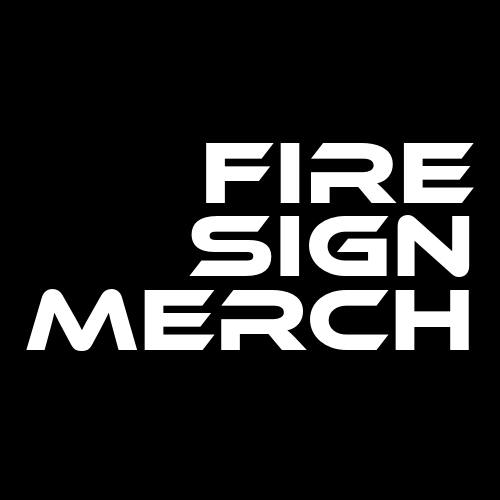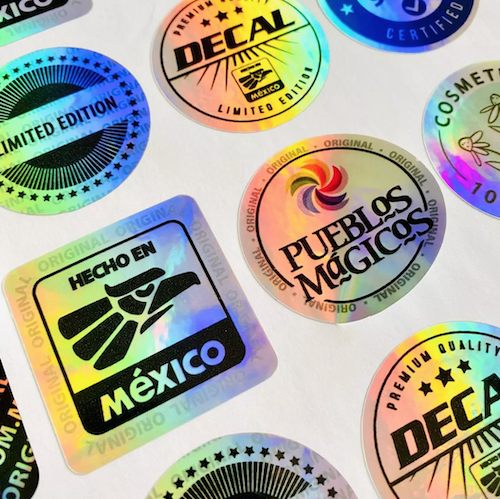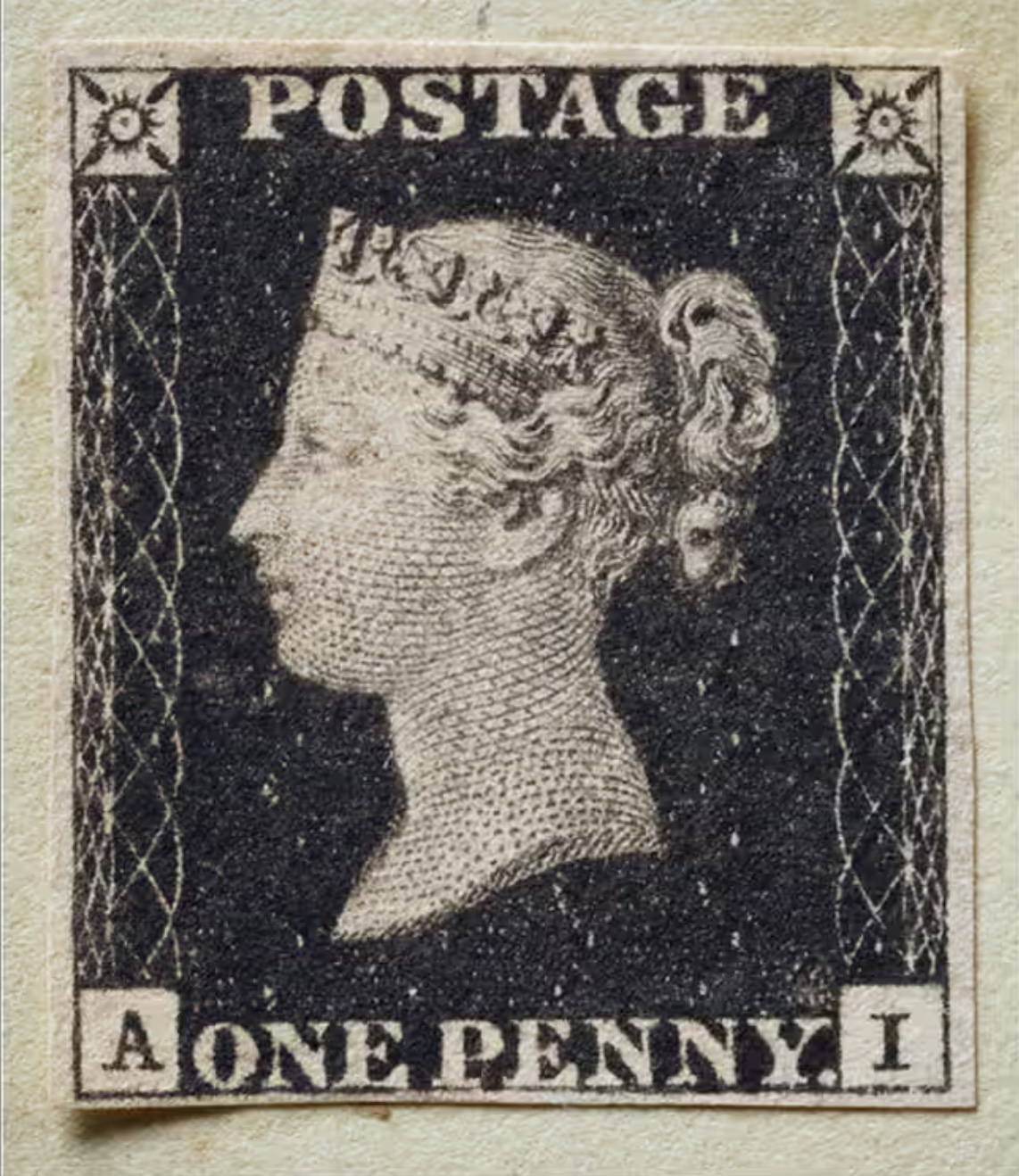
Stickers rock. They’re inexpensive, fun, and versatile. And if you think about it, they’re a somewhat radical form of media. We take stickers for granted now because they’re ubiquitous, but when artists realized we could send a mass message or display our art by simply slapping it onto whatever surface we came across, it was a whole new world.
The first known instance of commercial sticker application can be traced back to Sir Rowland Hill, a British inventor and educator, who created the Penny Black, an adhesive postage stamp in 1839. The stamp was made of plain paper with a layer of “gum” on the back, and it totally revolutionized mail delivery.
Since then we’ve evolved the medium to include many different materials, sizes, and use cases.
Let’s look at the options:
The Original Gangster (Paper Stickers): Paper stickers are printed on regular old matte paper and are commonly best for indoor applications, like product labeling, packaging, or promo items at events. They’re classic but do not hold up well against any elements, weather, or frequent touching.
Vinyl Stickers: Vinyl stickers are durable and weather-resistant, (unlike plain paper stickers) making them suitable for both indoor and outdoor use. They’re commonly used on telephone poles, vehicles, windows, and outdoor signage.
Die-Cut Stickers: Die-cut stickers are also usually made of vinyl, but are set apart by their custom shape. Die cutting is ideal for any design that is not a normal square or circle shape.
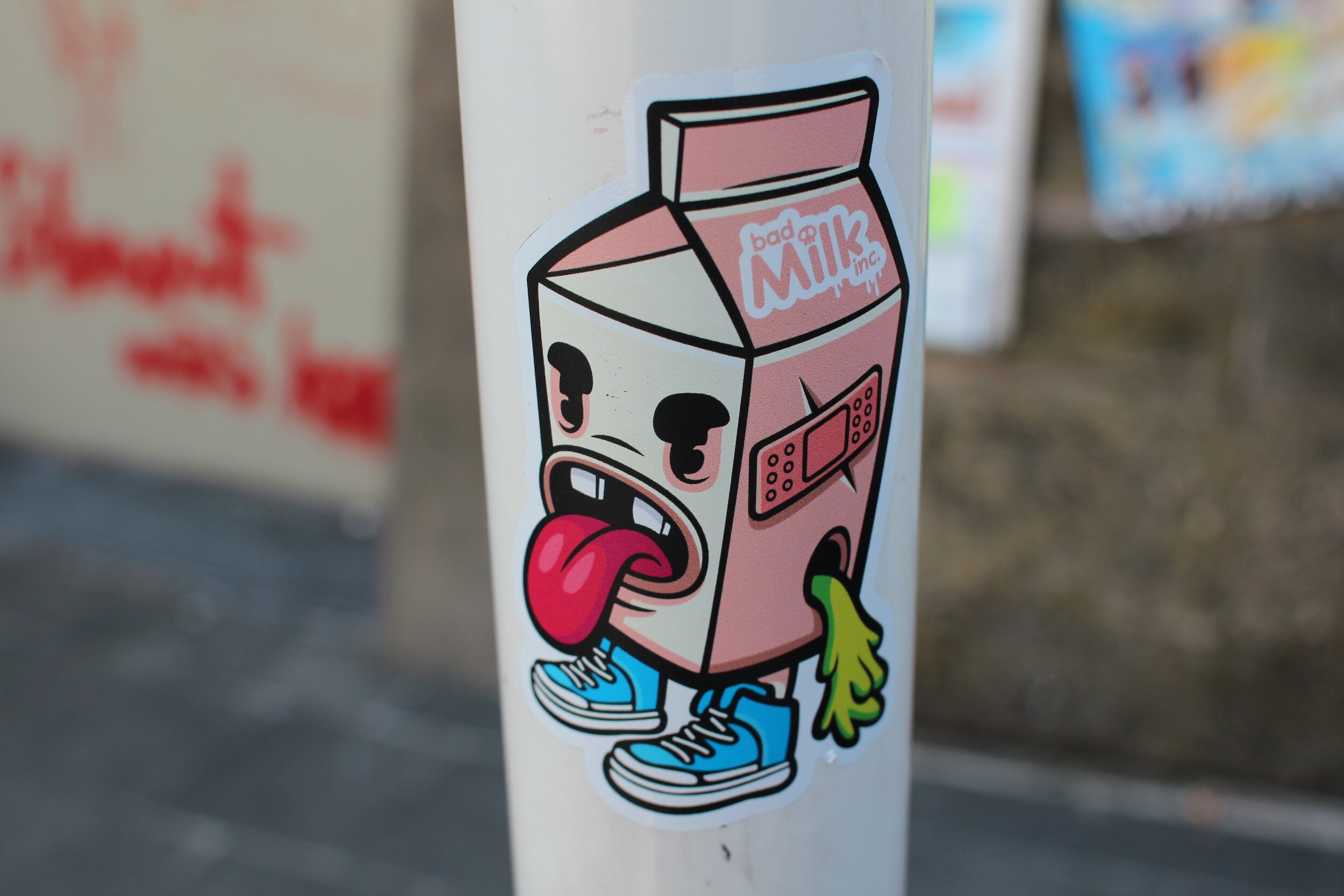
Clear Stickers: Clear stickers are transparent and are often used on glass surfaces or when a design requires a “no-background” look.
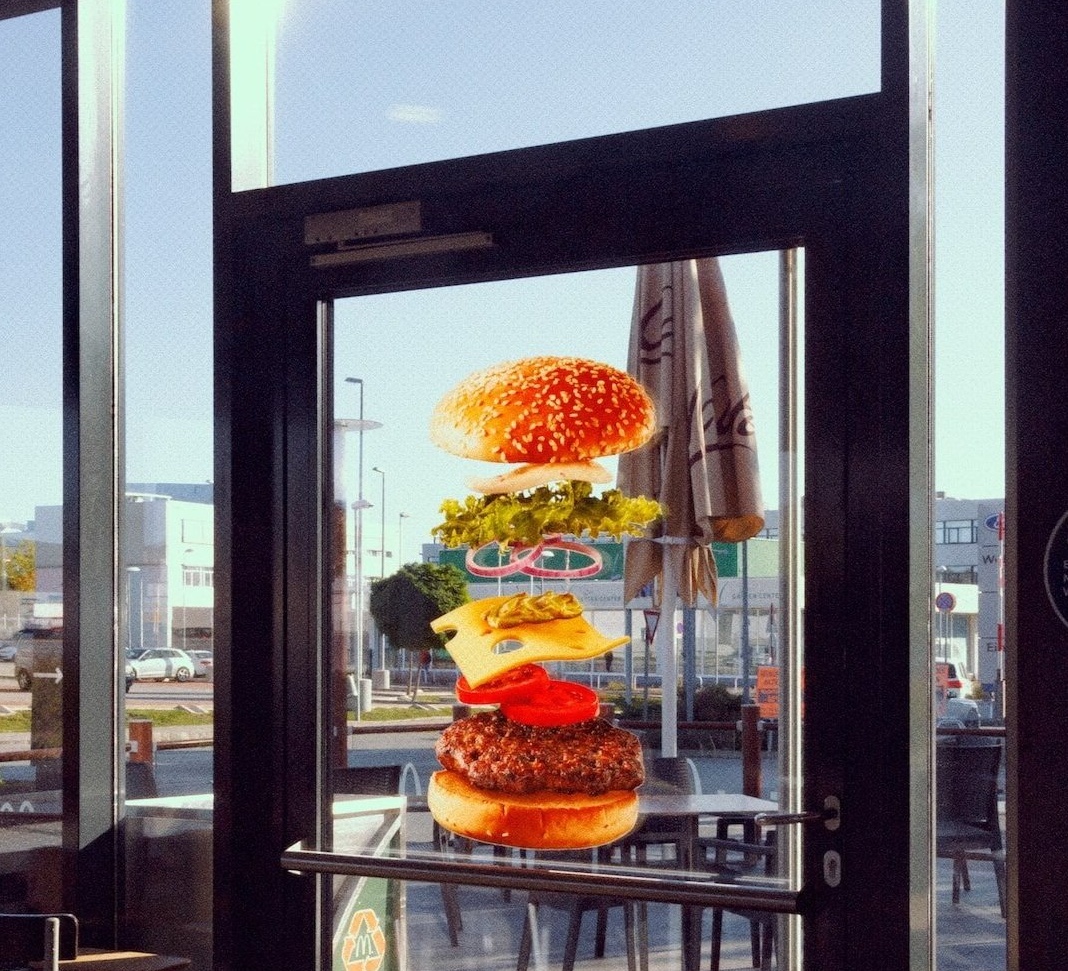
Window Clings: Window clings, also known as “static clings,” are static stickers that adhere to glass surfaces without adhesive. They are easy to remove and reposition, making them ideal for store displays and promotional campaigns.
Embossed or Foil Stickers: These stickers have raised or metallic elements, adding a premium and luxurious touch to the brand’s packaging or promotional materials. You will often find them on envelopes, hardcover books, and wrapped gifts.
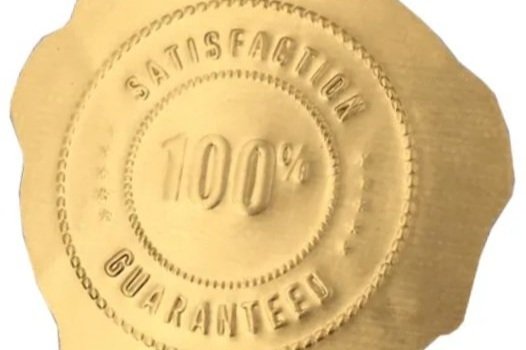
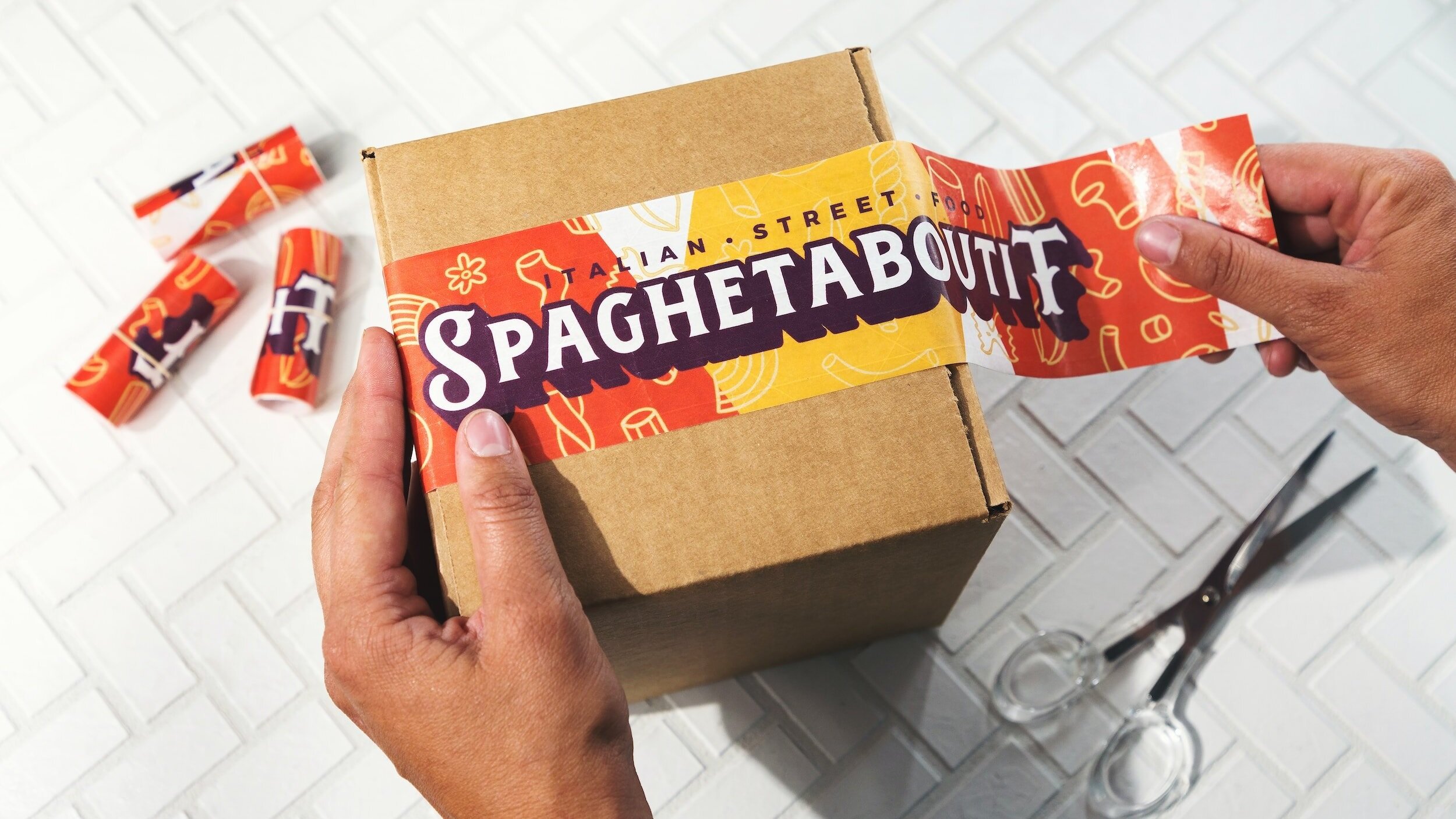
Product Labels: Brands use stickers as product labels to both visually set themselves apart from competitors, but also provide important information, such as product details, ingredients, and barcodes.
Holographic Stickers: Holographic stickers display a shifting, rainbow-like effect when viewed from different angles, creating an eye-catching and captivating appearance.
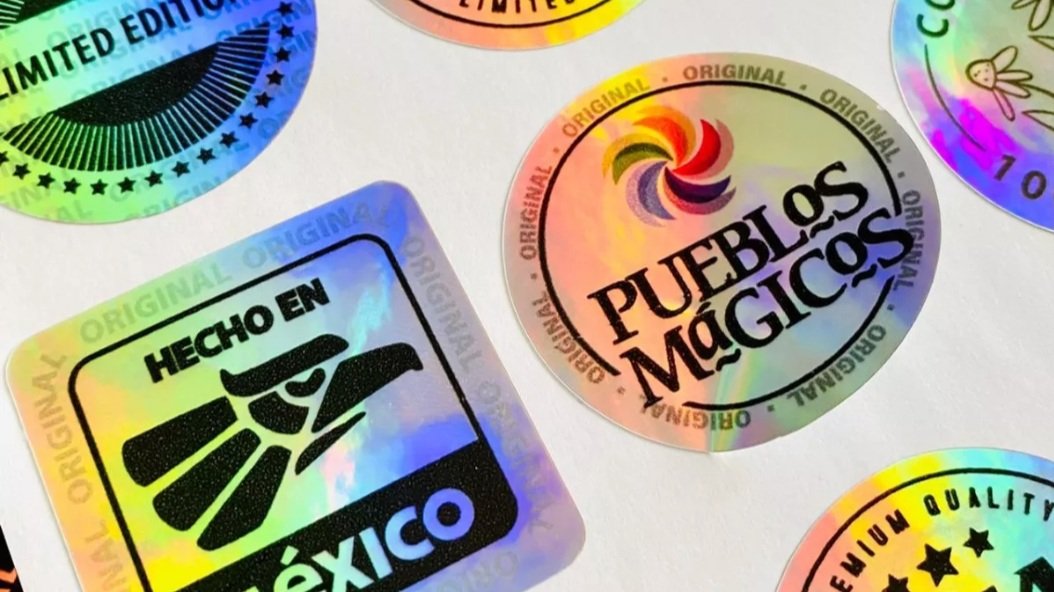
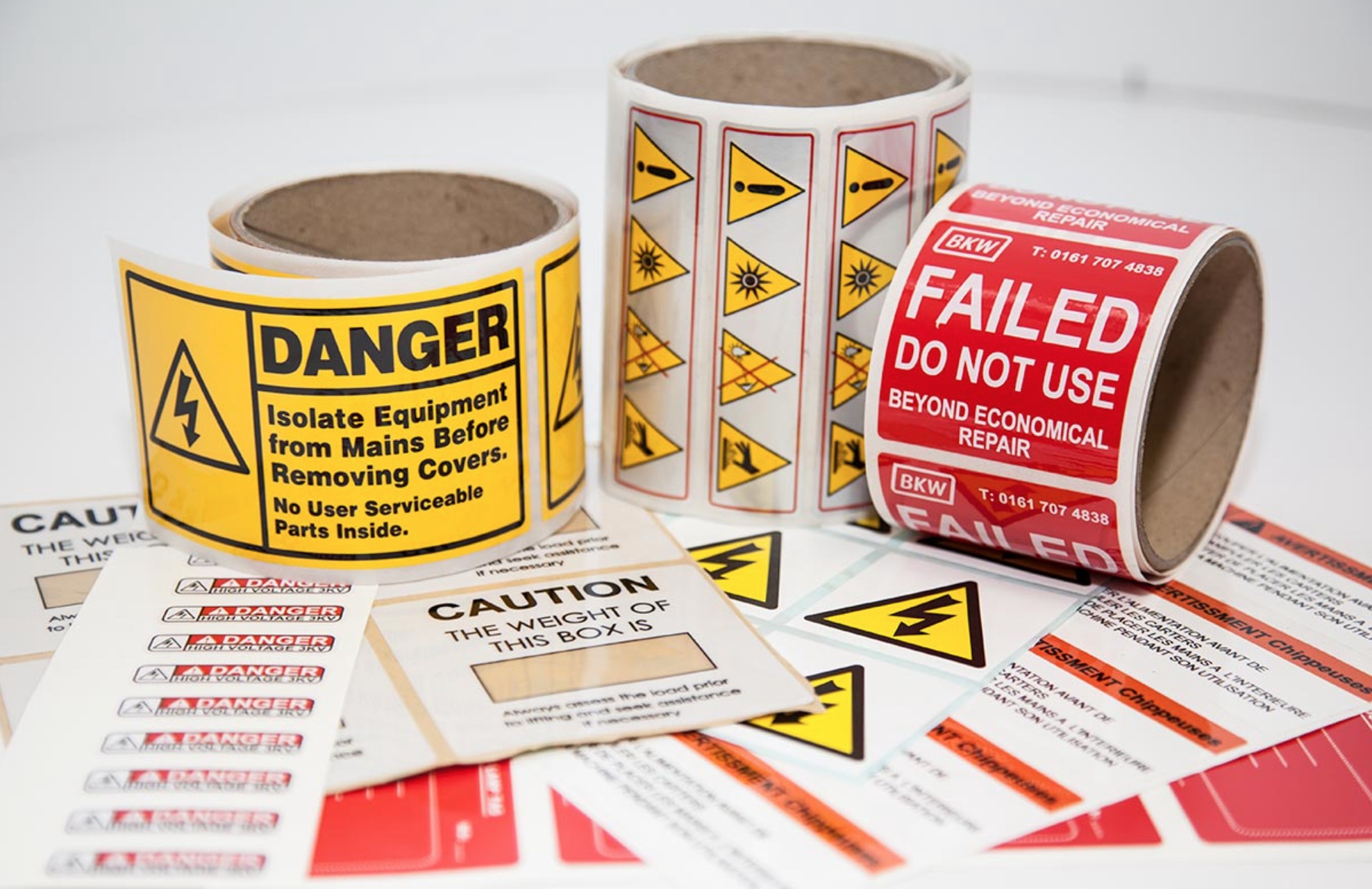
Polyester Stickers: Polyester stickers are durable and resistant to tearing, making them suitable for outdoor applications and harsh environments.
Reflective Stickers: Reflective stickers are made with materials that reflect light, making them visible in low-light conditions. They are often used for safety purposes, such as on vehicles and traffic signs.

These are just some of the more common sticker varieties available. Choosing the right sticker for your project depends on factors such as your intended use, the environment it will be exposed to, and the desired aesthetic effect.
The best place to start with any sticker project is your artwork. If you have a design you’d like to turn into a sticker, send it to us today.
